Asia’s street food scenes represent some of the most vibrant, diverse, and authentic culinary experiences available anywhere in the world. From steaming bowls of noodles to sizzling grilled meats, these informal dining venues often serve as the true gastronomic heart of their respective cities, where centuries-old recipes continue to thrive alongside boldly innovative modern interpretations. For travelers seeking to understand a culture through its cuisine, these street food destinations offer unparalleled immersion into local flavors and traditions.
Here is a list of 14 remarkable Asian cities where street food transcends mere sustenance to become an essential cultural institution.
Bangkok, Thailand
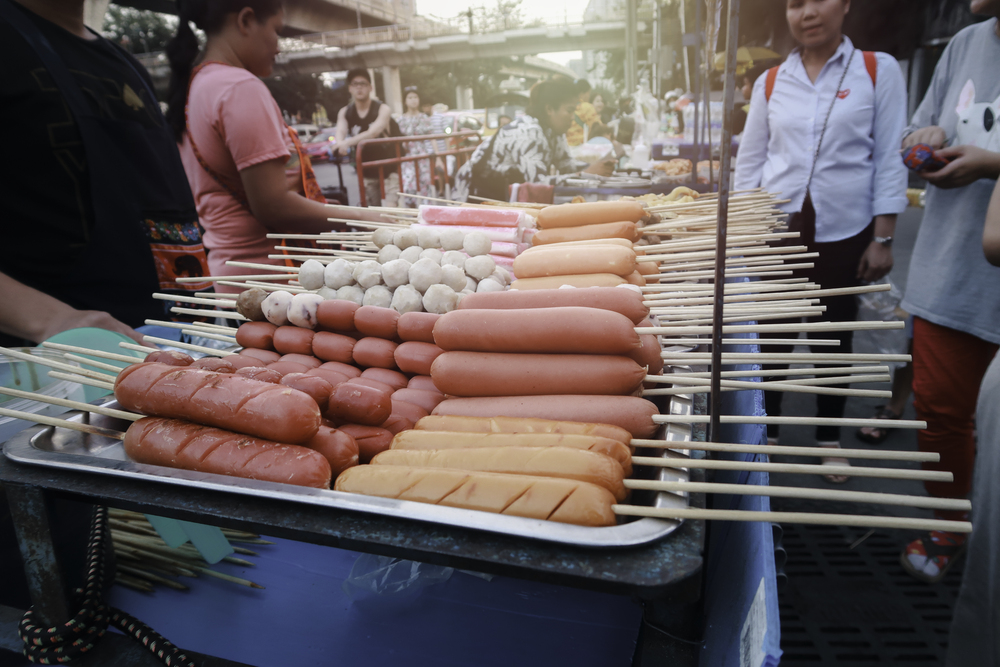
Thailand’s capital stands as perhaps the world’s ultimate street food destination, with an estimated 500,000 street vendors creating a round-the-clock feast across the sprawling metropolis. The city’s legendary street food culture thrives despite periodic government attempts to regulate vendors, with locals and tourists alike crowding around metal tables for dishes costing just a few dollars.
Yaowarat Road in Chinatown transforms nightly into a glowing stretch of food stalls serving everything from oyster omelets to bird’s nest soup. The scent of chilies, lime, and fish sauce fills the humid air as cooks prepare classics like pad thai, som tam papaya salad, and mango sticky rice with practiced efficiency honed through decades of daily repetition.
Taipei, Taiwan
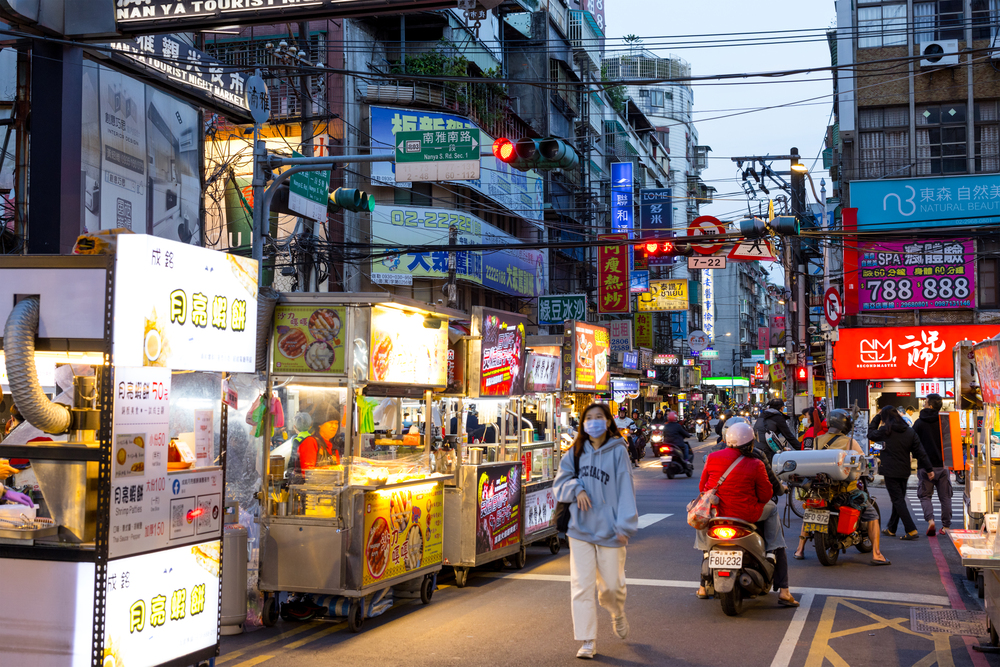
The Taiwanese capital’s night markets have achieved legendary status among culinary travelers, with Shilin Night Market standing as the most famous of dozens scattered throughout the city. The island’s complex history has created a unique food culture blending Chinese regional cuisines with Japanese and indigenous influences into something distinctly Taiwanese.
Stinky tofu lives up to its pungent name while rewarding brave eaters with deeply satisfying flavor, while oyster omelets offer delicate sweetness balanced with savory elements. The bubble tea phenomenon that conquered global beverage trends originated in Taiwan’s street stalls before spreading worldwide, demonstrating the outsized influence of this island’s vibrant food innovation culture.
Like Travel Pug’s content? Follow us on MSN.
Singapore

This city-state has elevated its street food culture through innovative government planning that gathered formerly scattered vendors into centralized hawker centers with proper sanitation and infrastructure. The result preserves traditional dishes while meeting modern health standards, a development recognized by UNESCO, which added Singapore’s hawker culture to its Intangible Cultural Heritage list in 2020.
Maxwell Food Centre and Lau Pa Sat host stalls serving the city’s multicultural heritage—Chinese, Malay, Indian, and Peranakan traditions to create a uniquely Singaporean cuisine. The world’s cheapest Michelin-starred meal can be found at Hawker Chan, whose soya sauce chicken rice represents the surprising refinement possible within humble food stall settings.
Penang, Malaysia

This island off Malaysia’s northwest coast has earned international recognition as a culinary destination centered around its exceptional street food scene. Georgetown’s historic streets host endless food stalls where Chinese, Malay, Indian, and Nyonya traditions blend into distinctly Penang specialties.
Char kway teow noodles fried in blazing woks take on special character when prepared by seasoned hawkers using lard and cockles for deeper flavor dimensions. Assam laksa provides a sour fish soup experience utterly distinct from other regional versions, while nasi kandar presents rice with curries displaying Indian Muslim influences central to Penang’s multicultural identity.
Ho Chi Minh City, Vietnam

Vietnam’s southern metropolis presents one of Asia’s most accessible street food cultures, where tiny plastic stools serve as the seating for world-class culinary experiences. Beyond the globally famous pho and banh mi sandwiches, the city offers regional specialties like com tam (broken rice) topped with grilled pork and a crispy fried egg.
Mobile vendors balance impossibly large amounts of goods on motorbikes or traditional shoulder poles, creating a constantly shifting landscape of culinary options throughout the day. The city’s French colonial history reveals itself in the crisp baguettes and coffee culture that have been thoroughly reimagined through local ingredients and sensibilities into something uniquely Vietnamese.
Like Travel Pug’s content? Follow us on MSN.
Osaka, Japan
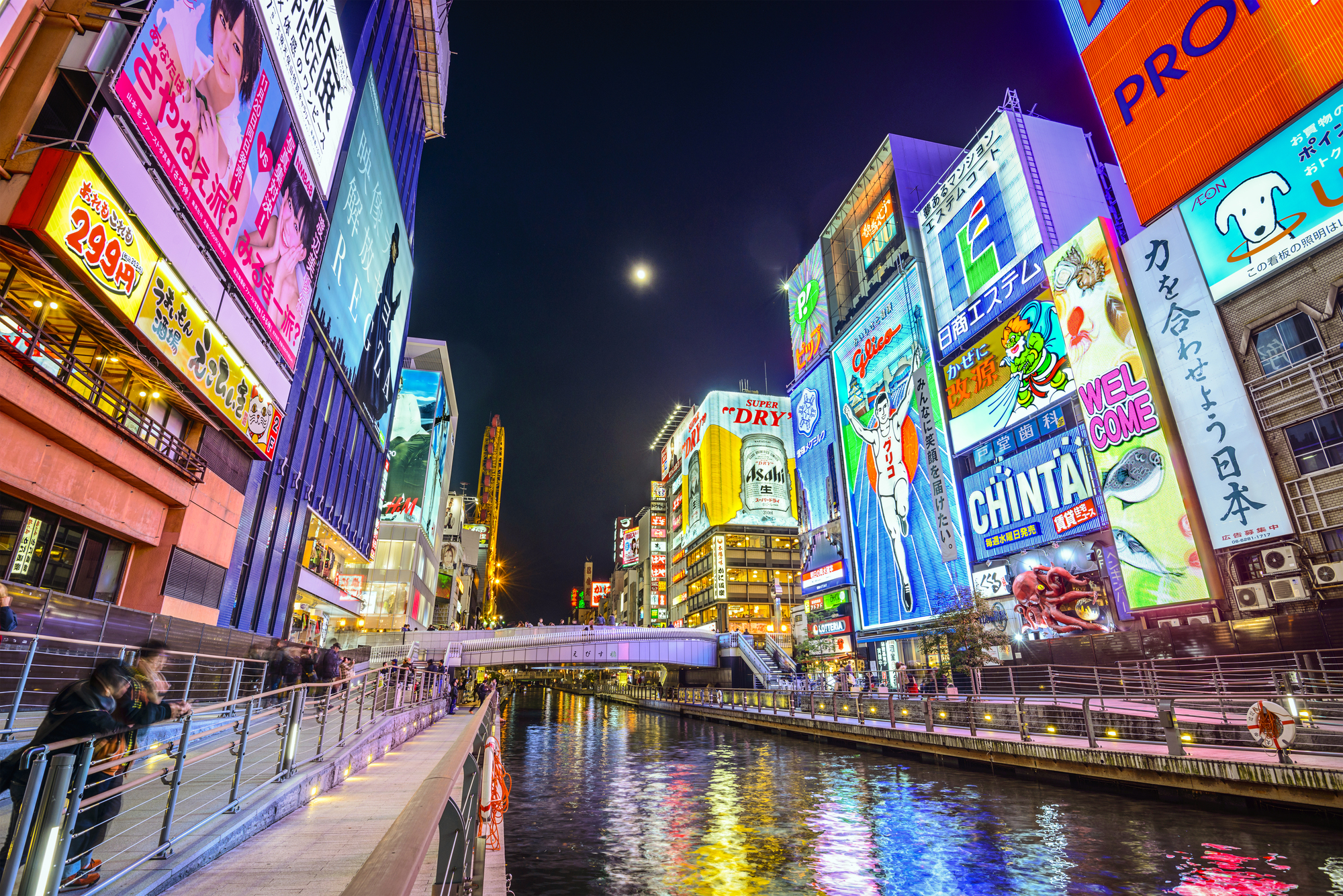
Known as “Japan’s kitchen,” this merchant city has developed a street food tradition distinct from Tokyo’s more refined dining culture. Dotonbori Entertainment District serves as the epicenter of Osaka’s famous guidance culture—the concept of eating yourself into bankruptcy. Takoyaki octopus balls sizzle in specialized circular molds before being topped with dancing bonito flakes, while okonomiyaki savory pancakes are cooked on large teppan grills with ingredients chosen to customer specifications.
The city’s vendors specialize in affordable, hearty street food, reflecting Osaka’s working-class heritage and entrepreneurial spirit. Kushikatsu fried skewers demonstrate the Japanese devotion to specialization, with entire establishments dedicated to perfecting this seemingly simple cooking technique.
Hong Kong
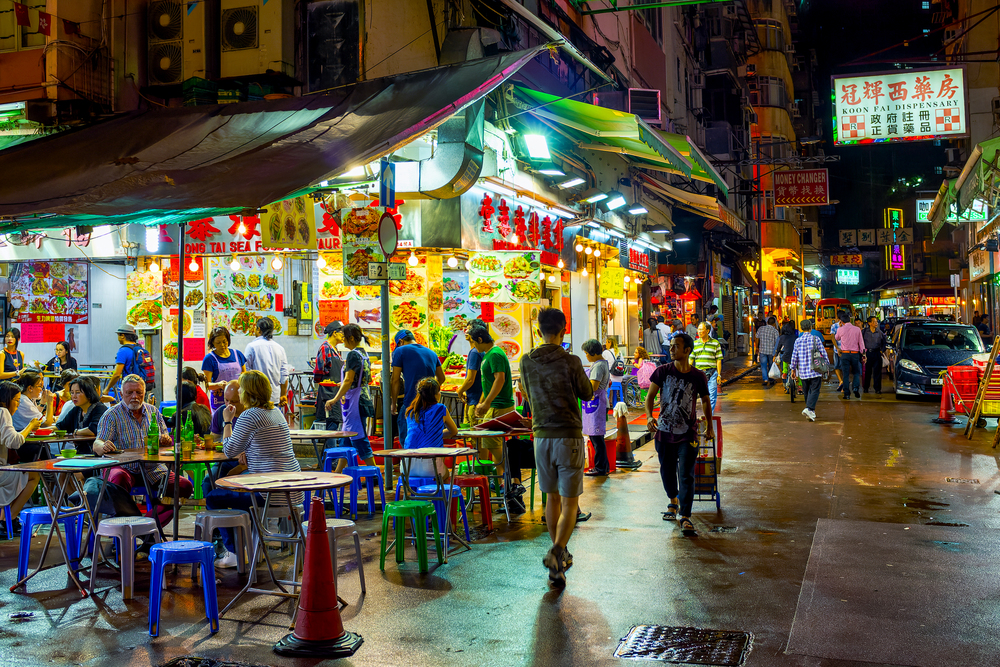
Before its incorporation into China, this former British colony developed one of Asia’s most distinctive street food identities, where East met West in uniquely Hong Kong ways. The city’s dai pai dong open-air food stalls have diminished in number due to government regulations, but continue serving classic dishes like fish balls in curry sauce and Hong Kong-style milk tea.
Egg waffles cooked in distinctive bubble-shaped molds create a crispy-on-the-outside, soft-on-the-inside treat that has become emblematic of the city’s street snacking culture. The Hong Kong tradition of “siu ye”—late-night eating—keeps streets alive with food vendors serving workers leaving evening shifts or youngsters continuing their nights on the town.
Delhi, India

India’s capital showcases the remarkable diversity of the subcontinent’s street food traditions, with notable concentrations in Old Delhi’s Chandni Chowk district. Paratha Lane features shops specializing solely in stuffed flatbreads with fillings ranging from spiced potatoes to paneer (Indian cottage cheese), while Jama Masjid area vendors serve magnificent kebabs grilled over charcoal fires.
Chaat—a category of savory snacks combining crispy textures with tangy, sweet, and spicy flavors—reaches its zenith in Delhi’s street stalls, where pani puri and aloo tikki create explosive flavor experiences. The influence of Mughal cuisine appears in rich meat dishes like nihari stew simmered overnight, while vegetarian traditions flourish in the countless dal and sabzi preparations available throughout the sprawling metropolis.
Like Travel Pug’s content? Follow us on MSN.
Seoul, South Korea
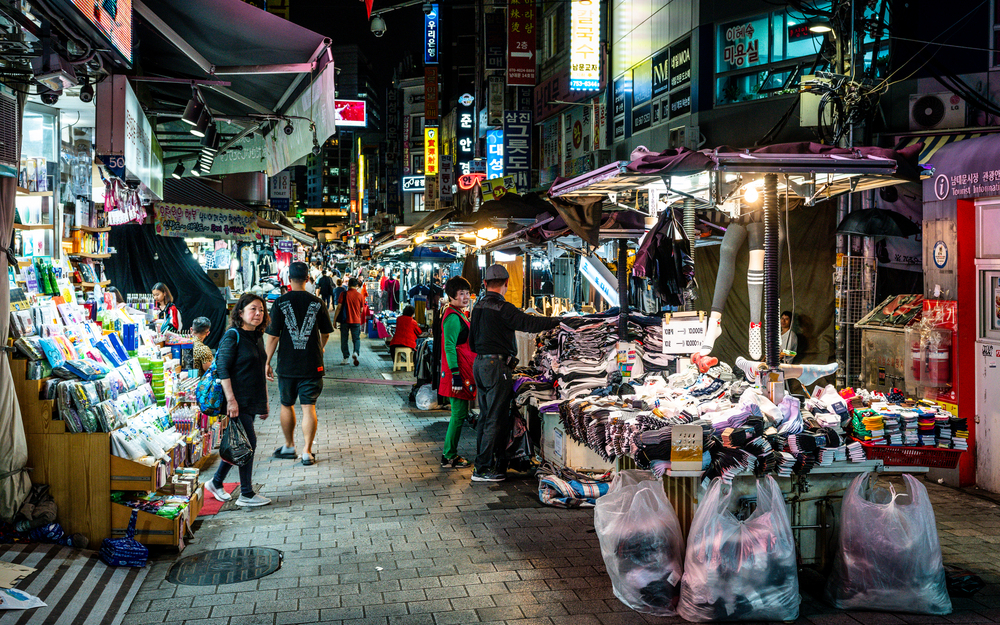
The Korean capital’s pojangmacha tent bars and street vendors create a vibrant nighttime economy centered around drinking culture and its accompanying foods. Gwangjang Market stands as one of the city’s most famous food destinations, with vendors specializing in dishes like bindaetteok mung bean pancakes, and Mayak gimbap—”addictive” seaweed rice rolls named for their impossible-to-resist quality.
Tteokbokki spicy rice cakes simmering in bright red gochujang sauce represent Seoul street food’s perfect marriage of carbohydrates and heat, while Korean fried chicken demonstrates how global influences become thoroughly reimagined through local techniques and ingredients.
Chengdu, China
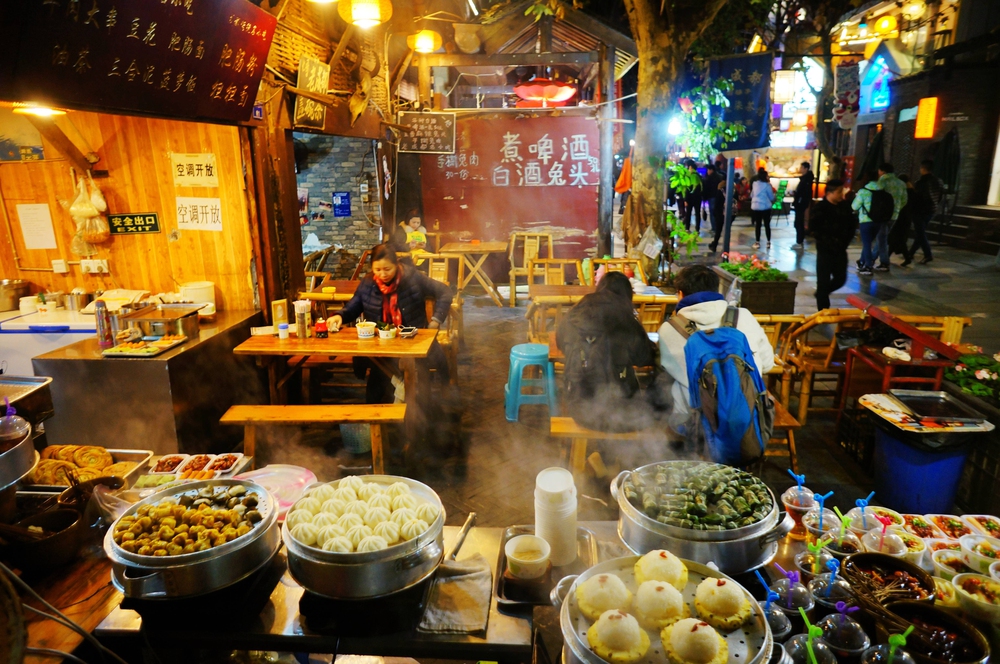
The capital of Sichuan province offers a street food scene as fiery and bold as the region’s reputation suggests. The city’s famous numbing-hot mala flavor created by Sichuan peppercorns and chilies appears throughout street food offerings, from dandan noodles to mapo tofu.
Late-night skewer stalls serve everything from rabbit heads to lotus roots, all heavily spiced and perfect accompaniments to the city’s famous teahouse culture. Jinli Ancient Street combines a historical atmosphere with concentrated food offerings, though locals often prefer less touristic venues for authentic flavors. Chengdu earned UNESCO recognition as a City of Gastronomy largely due to its living culinary traditions manifested most accessibly through its street food culture.
Jaipur, India

The “Pink City” of Rajasthan presents distinctive regional street foods reflecting the desert state’s unique culinary heritage. Pyaaz kachori—deep-fried pastries filled with spiced onions—create a perfect portable breakfast alongside sweet jalebis fresh from bubbling oil. The city’s Chaat Gali lane near Johari Bazaar concentrates vendors specializing in papdi chaat topped with yogurt, chutneys, and spice blends that balance sweet, sour, spicy, and tangy notes.
Lassiwala on MI Road has served the city’s most famous yogurt drinks since 1944, while kulfi falooda combines traditional ice cream with rose syrup, vermicelli, and basil seeds in a refreshing dessert perfect for hot Rajasthani days. Namkeen savory snack shops showcase the region’s expertise in fried, spiced legumes and grains.
Like Travel Pug’s content? Follow us on MSN.
Tokyo, Japan

Despite being known for refined dining, Japan’s sprawling capital maintains vibrant street food traditions, particularly concentrated around transit hubs and entertainment districts. Ameyoko market beneath railway tracks in Ueno preserves post-war market culture with vendors selling everything from fresh seafood to deep-fried menchi-katsu meat cutlets. Skewered foods dominate the landscape, with yakitori chicken specialists using every part of the bird and ikayaki grilled squid vendors perfuming the air with savory smoke.
Seasonal specialties like roasted sweet potatoes in winter and kakigori shaved ice in summer demonstrate Japanese appreciation for foods that mark the passage of time. The city’s department store basement food halls—depachika—represent a modernized, indoor evolution of street food culture with unparalleled variety and quality.
Hanoi, Vietnam

North Vietnam’s capital offers street food distinct from its southern counterpart, with Chinese influences more prominent in many dishes. The Old Quarter’s narrow streets host countless mobile vendors and tiny storefronts specializing in hyperlocal specialties—some families have prepared the same dish for generations.
Bun cha combines grilled pork with rice noodles, herbs, and dipping sauce in a dish made internationally famous when Anthony Bourdain and President Obama shared it at a modest local restaurant. Egg coffee creates a dessert-like beverage experience unique to Hanoi, while pho differs from southern versions with fewer garnishes and clearer broth. Vendors often specialize in just one dish, perfecting it through decades of daily practice rather than offering extensive menus.
Yangon, Myanmar
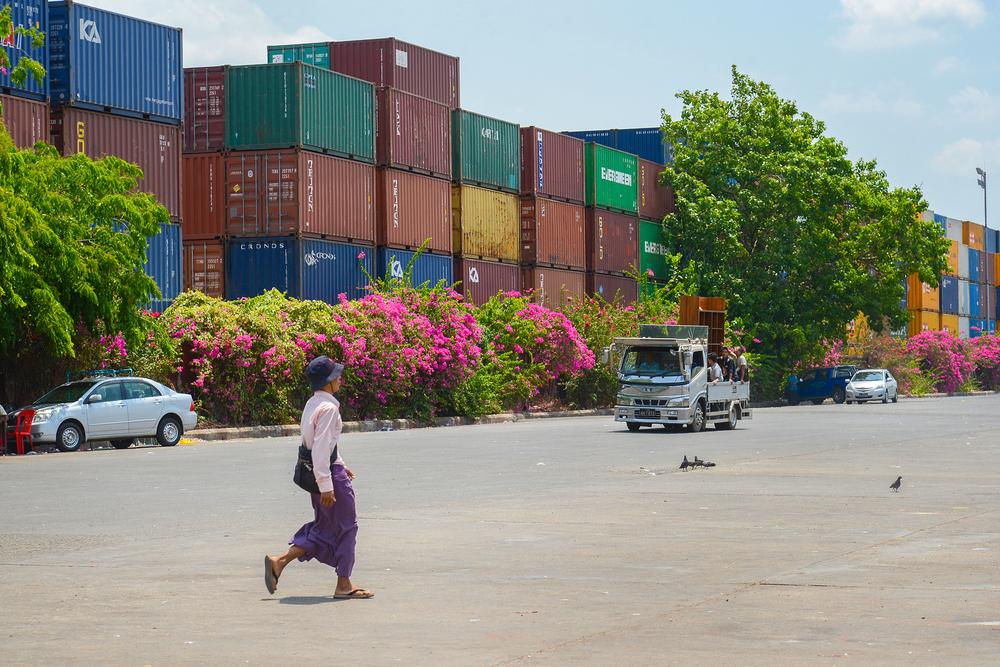
Following Myanmar’s gradual opening to international visitors, the former capital’s extraordinary street food scene has gained deserved recognition for its unique flavors distinct from neighboring cuisines. Mohinga—rice noodles in catfish broth—serves as the unofficial national dish, available from dawn from sidewalk vendors who sell out by mid-morning.
Chinese and Indian influences appear throughout the street food landscape, with samosas and biryani as common as noodle dishes and dumplings. Tea shops function as the city’s social hubs, serving not just the famous sweetened milk tea but also deep-fried savory snacks like split pea fritters. The city’s colonial architecture provides an atmospheric backdrop for culinary walkers, sampling everything from fresh coconut pancakes to fermented tea-leaf salad.
Like Travel Pug’s content? Follow us on MSN.
Culinary Crossroads of Asia

These 14 cities represent the pinnacle of Asian street food culture, where humble ingredients transform through skilled hands into culinary experiences rivaling fine dining establishments at a fraction of the cost. Street food serves not merely as affordable sustenance, but as a living cultural heritage, preserving traditional techniques while continuously evolving to reflect changing tastes and circumstances.
For travelers seeking authentic connections to Asian cultures, these vibrant food scenes offer direct access to local life through the universal language of shared meals, creating memories that linger long after the last bite has been savored.
More from Travel Pug

- Cities Growing so Fast You Won’t Recognize Them in 10 Years
- 13 Destinations Where Tourists Regularly Regret Their Trip
- 16 U.S. Cities That Are Quietly Becoming Travel Hotspots
- Where to Travel If You Love Long Bus Rides and Daydreams
- 20 Cities Perfect for Solo Travelers Who Crave Adventure & Culture
Like Travel Pug’s content? Follow us on MSN.
